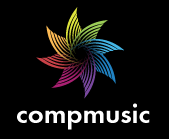Hindustani Music Rhythm Dataset
CompMusic Hindustani Rhythm Dataset is a rhythm annotated test corpus for automatic rhythm analysis tasks in Hindustani Music. The collection consists of audio excerpts from the CompMusic Hindustani research corpus, manually annotated time aligned markers indicating the progression through the taal cycle, and the associated taal related metadata. A brief description of the dataset is provided below.
For a brief overview and audio examples of taals in Hindustani music, please see
http://compmusic.upf.edu/examples-taal-hindustani
Reference
Please cite the following publication if you use the dataset in your work:
Ajay Srinivasasmurthy, Andre Holzapfel, Ali Taylan Cemgil, Xavier Serra, "A generalized Bayesian model for tracking long metrical cycles in acoustic music signals", in Proc. of the 41st IEEE International Conference on Acoustics, Speech and Signal Processing (ICASSP 2016), Shanghai, China, March 2016 (to appear).
Download
This dataset can be downloaded here.
Contact
If you have any questions or comments about the dataset, please feel free to write to us at: mtg-info@upf.edu


